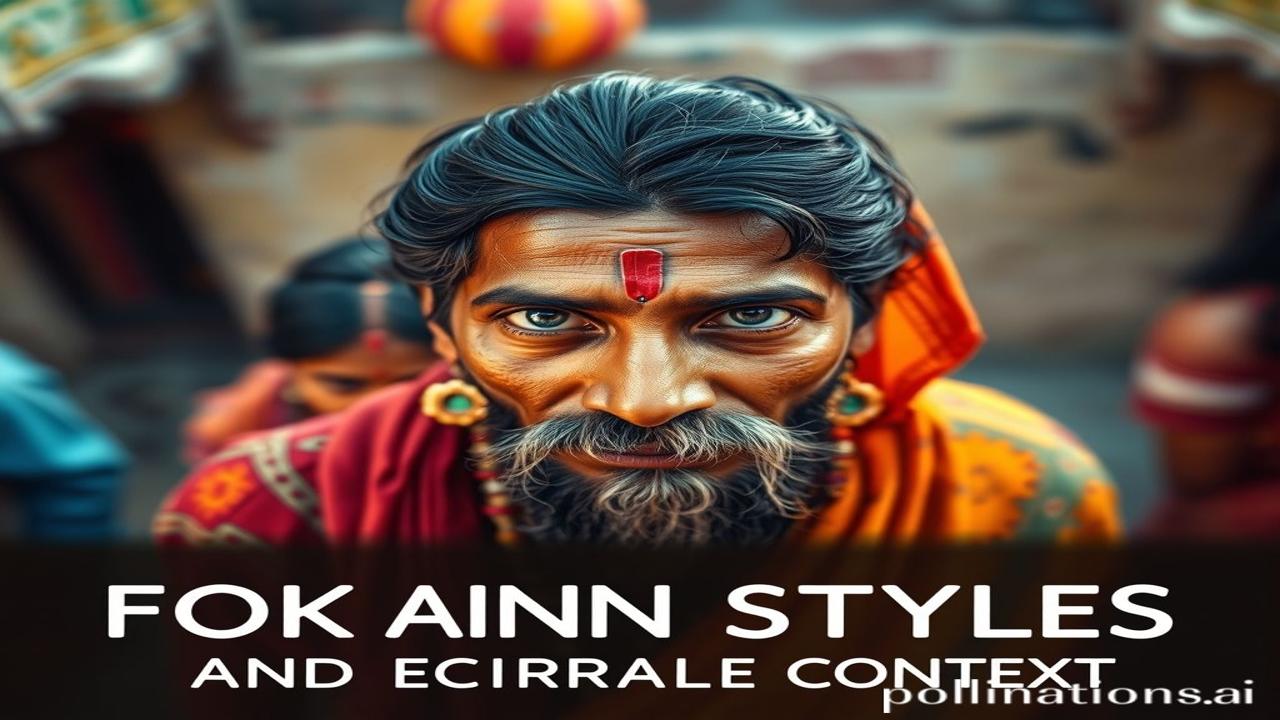Waqt Ke Rang: Folk Painting Styles and Their Cultural Context
Kabhi socha hai, ki jo rang hum aaj apne canvas pe utarte hain, unki jadd (root) kitni gehri hai? Kitni peedhiyon ne apne dil ki baat, apne jeevan ki kahani, in rangon mein chhupaai hai? Aaj hum chalenge, waqt ki unhi galiyon mein, jahan har brushstroke ek itihaas hai, har rang ek sanskriti…
Painting the Past: Understanding Folk Art’s Soul
Folk painting styles. Just the name sounds intriguing, right? Lekin ye sirf painting nahi hai, bhai! It’s a window into the soul of India. It’s about capturing the essence of a place, a people, their beliefs, and their daily lives, all through the magic of color and form.
These aren’t just pictures; they’re living documents. They’re stories whispered down generations, traditions painted onto walls, and prayers offered in vibrant hues. The beauty lies in its simplicity, its raw honesty, and its deep connection to the land.
They emerged, not from royal courts or art schools, but from the heart of the villages, sometime around ancient and medieval times, varying across regions. Think Madhubani from Bihar, Warli from Maharashtra, Pattachitra from Odisha, Kalamkari from Andhra Pradesh – each a unique dialect in the grand language of Indian art.
Why is it important? Because it’s our history. Not just the kings and queens kind, but the history of the common person, the kisan, the karigar, the mahila who sang songs while grinding grain. It’s a living testament to the resilience and creativity of the Indian spirit.
Zameeni Sach: Life Painted in Folk Tales
Imagine this: Ma Janki is preparing for a wedding in her family. The walls of her angan are being decorated with Madhubani paintings. Not just random patterns, mind you. Each painting tells a story, a myth, a blessing. She mixes rice flour with natural pigments, carefully sketching deities, animals, and geometric designs with a twig. Her daughter, Laxmi, helps her, learning the art, absorbing the stories, carrying the tradition forward.
Meanwhile, in Maharashtra, a Warli artist, Dada Bhau, draws simple geometric figures depicting scenes of everyday life – hunting, dancing, farming – on the mud walls of his hut. The stick figures seem to dance in the afternoon sun, telling tales of community and harmony with nature. He uses rice paste for the white pigment, reflecting the stark beauty of his world.
Aur Odisha mein, a Chitrakar (painter) meticulously paints a Pattachitra scroll, narrating the tales of Lord Jagannath. He uses vibrant, natural colors and intricate details, telling the story of the deities’ yearly journey. This scroll will then be unrolled during festivals, captivating audiences with its vibrant imagery and timeless narratives.
These are not just artists; they are storytellers, keepers of culture, the visual voices of their communities. Their art is their life, their livelihood, their legacy.
Dharohar Aur Pehchan: The Echoes of the Past Today
Today, these folk painting styles aren’t just confined to villages. They’ve found their way into our homes, our fashion, our art galleries, and even our hearts. You see Madhubani motifs on sarees, Warli art on furniture, and Pattachitra designs on bags.
They connect us to our roots, to our bharatiyata. They remind us of the simple joys, the deep-rooted values, and the artistic genius that lies within us. They are a reminder that our identity is not just about what we are today, but also about where we come from. The colors of Kalamkari on a modern dress speaks of tradition with a modern twist.
Mazedar Tathya Ya Bhram-Bhanjak: Did You Know?
Log samajhte hain ki folk art simple hai, lekin asli sach yeh hai ki iski har line, har rang ek gehra arth chhupaye hai. Each symbol, each color has a specific meaning, passed down through generations. It’s a complex language of symbols and meanings that makes these art forms so powerful.
Another misconception? That folk art is static. But it evolves! While the core traditions remain, artists are constantly innovating, experimenting with new materials, and incorporating contemporary themes.
Drishya Aur Bhavnaayein: A Sensory Journey
Imagine the smell of earth mingling with the sweet fragrance of natural pigments. The feel of the rough mud walls under your fingertips. The sound of folk songs echoing in the village air, as the artists work their magic. The vibrant colors exploding on the canvas, telling stories of gods, goddesses, nature, and the everyday struggles and triumphs of life. It’s a sensory explosion that transports you to another time and place.
Antim Vichar Ya Uddharan: The Enduring Legacy
In folk art we find not just colors and forms, but echoes of our collective past, reflections of our present, and blueprints for our future. It is a reminder that art is not just about aesthetics; it’s about connection, community, and the enduring human spirit.
“कला सत्यं शिवं सुंदरम्” – Art is truth, goodness, and beauty. And in the heart of Indian folk art, we find all three. Let’s keep the colors alive, the stories flowing, and the traditions vibrant for generations to come.
